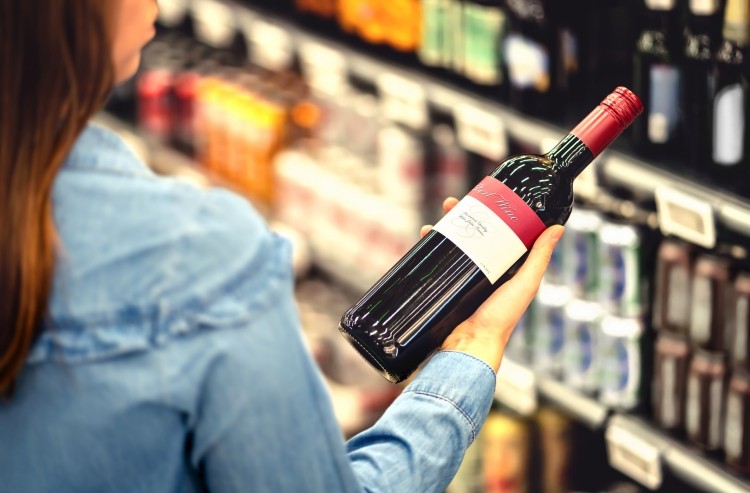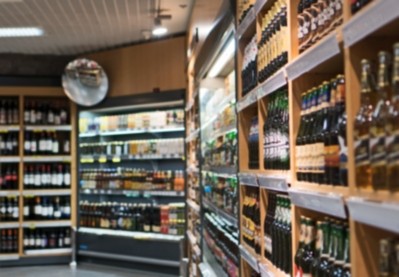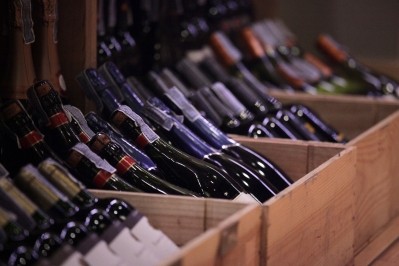Alcohol labelling is ‘limited’ and falls short of recommendations, says WHO

The WHO European Region* has the highest alcohol consumption per capita in the world. While the WHO recommends that alcoholic beverages provide consumer information on ingredients, nutritional values and alcohol harm; this has not been made mandatory in most countries.
However, it is generally mandatory to provide similar information on other products such as non-alcoholic beverages, food and tobacco.
While the alcohol industry has been taking big steps in recent years to provide such information voluntarily, the WHO says the ‘voluntary industry commitments, although increasing in amount and scope, either are not monitored transparently or do not meet WHO recommendations’.
Not good enough...
Labelling of alcohol beverages is not mandatory in many European countries: a ‘lack of critical information’ that the WHO’s Health Evidence Network (HEN) finds concerning. It says consumers deserve to know the contents of alcoholic beverages and the possible risks of drinking them: “These are minimum requirements for making informed decisions.”
A report from the HEN, published this month, takes stock of how alcohol labelling is being addressed across the WHO European Region. It found that 40% of Member States have some legislation on ingredients listing, 19% have some legislation on inclusion of nutritional values and 28% have some legislation on some health information labelling or warnings on alcohol products (including warnings for pregnant women, on drinking and driving and on underage drinking or general warnings on harm to health).
Furthermore, legislation may only be applied to certain drinks or certain categories in some countries. Some countries have specific rules for alcoholic beverages while others have joint legislation for alcohol and tobacco. In most cases alcohol labelling messages are mandated to be in written from; while in others the message can be in pictorial form.
Only one EU Member State follows the WHO’s recommendations in full.
“Compared with other fields, such as tobacco or foodstuffs, the presence of labelling on alcohol products is limited and most labelling legislation still does not align fully with WHO’s 2017 discussion paper on policy options for alcohol labelling (Alcohol labelling: a discussion document on policy options), particularly with regards to presentation of the label in terms of message size and visibility," say the HEN researchers.
“Voluntary industry commitments vary in scope, in the information included across product categories and in how the information is displayed. Commitments are mostly not monitored transparently and, where available, do not meet recommendations in the WHO discussion paper on policy options for alcohol labelling.”
So how should alcohol labelling be done?
Despite its disappointment in overall labelling practices, the HEN report does identify some positive examples.
The Eurasian Customs Union (Belarus, Kazakhstan and the Russian Federation) shows how a functioning multigovernmental approach to alcohol labelling can harmonize different legislative systems. “The ECU adopted 3 technical regulations that oblige producers to include a list of ingredients and nutritional values on the labels of food products and alcoholic beverages," explains the report. "By 2019, all 3 sets of technical regulations were finalized. The results of this policy now need to be assessed by an independent audit.”
France, meanwhile, has introduced a law mandating labelling for all alcoholic beverages with a warning against drinking during pregnancy. The country’s authorities embedded the regulation within a wider strategy to raise awareness of the harms of drinking alcohol during pregnancy. Recent studies have already shown improvement in public awareness. The French Health Minister announced the inclusion of a measure to improve the visibility of the pregnancy logo in the National Public Health Plan for 2018–2022.
The Russian Federation has adopted stricter alcohol labelling regulations. It divided the comprehensive process to introduce legislation into smaller requests. Russian Federal Law No. 171 on the production and circulation of alcohol (which also regulates alcohol labelling) was first introduced in 1995, but has since been amended more than 40 times. “This step-by-step strategy helped the country to achieve progress in line with WHO recommendations.”
Policy recommendations
Top of the policy recommendations from the researchers is mandatory regulation – not voluntary commitments – when it comes to alcohol labelling. They point to food and tobacco, where labelling has been found to lead to changes in consumer behaviour (although they acknowledge that there has been less research on the effectiveness of labels for alcohol).
They also not that the introduction of alcohol labelling has been shown to be more effective if it is part of a broader package of alcohol policies: such as broader social campaigns to foster long-term changes in society’s perception, attitudes and social norms around alcohol.
“The effectiveness of this packaged approach has been demonstrated for both tobacco and nutrition, where warning labels are often not a standalone practice but are accompanied by other policy measures.”
The main policy ideas recommended by the researchers for Europe are:
- establish labelling that includes all recommended nutritional values and lists all ingredients;
- establish labelling that includes the harm done by alcohol (such as pregnancy-related harm, harm to minors, drinking and driving warnings);
- ensure regulations include specific directions about how all information should be presented on labels (e.g. appropriate size and font, front of pack, rotating messages and easy-to-understand information)
- favour mandatory regulation over voluntary commitments as this allows better control over the content and presentation of the message;
- provide clear input and direction from public health bodies if messages are to be voluntary and self-regulated by industry to ensure that effective messages are displayed;
- ensure that mechanisms for enforcing implementation, for independent monitoring and for evaluation of the impact of labelling policies are in place regardless of whether labelling is voluntary or mandatory;
- invest in strengthening research on alcohol labelling to identify the most effective form and content of the labelling communication (e.g. photographs, pictograms and written messages, including the most effective wording).
The full report and recommendations can be found here.
* There are 53 countries in the WHO European Region: primarily covering the EU and adjacent countries but also extending to Israel, Kazakhstan, Kyrgyzstan, Uzbekistan, Turkmenistan and Tajikistan.






